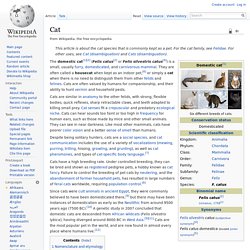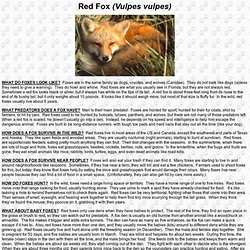

Dog Breeds, Breed Information and Picture. Get Notified Get Notified When New Puppies Are AddedReceive an email alert when additional puppies are added.

It's easy and free! Choosing dog breeds based on your lifestyle is the most important factor when adopting a puppy. View our complete dog breed profiles to get a better understanding of expected temperament, character, care and exercise requirements. We recommend our BreedMatch tool to help narrow down your favorite dog breeds. BREED GROUP: ToyWEIGHT: 7-9 lbsHEIGHT: 9-11.5 inchesCOLOR(S) black, gray, silver, or black and tan Size: Grooming Needs: Exercise Needs: Good With Dogs: Watchdog Ability: BREED GROUP: HoundWEIGHT: Male: 60; Female: 50 lbsHEIGHT: Male: 27; Female: 25 inchesCOLOR(S) all colors permissible except spotted.
Cat. The domestic cat[1][2] (Felis catus[2] or Felis silvestris catus[4]) is a small, usually furry, domesticated, and carnivorous mammal.

They are often called a housecat when kept as an indoor pet,[6] or simply a cat when there is no need to distinguish them from other felids and felines. Cats are often valued by humans for companionship, and their ability to hunt vermin and household pests. Cats are similar in anatomy to the other felids, with strong, flexible bodies, quick reflexes, sharp retractable claws, and teeth adapted to killing small prey. Cat senses fit a crepuscular and predatory ecological niche. Cats can hear sounds too faint or too high in frequency for human ears, such as those made by mice and other small animals.
Red Fox (Vulpes vulpes) Red Fox (Vulpes vulpes) WHAT DO FOXES LOOK LIKE?

Foxes are in the same family as dogs, coyotes, and wolves (Canidae). They do not bark like dogs (unless they need to give a warning). They do howl and whine. Red foxes are what you usually see in Florida, but they are not always red. WHAT PREDATORS DOES A FOX HAVE? HOW DOES A FOX SURVIVE IN THE WILD? HOW DOES A FOX SURVIVE NEAR PEOPLE? HOW DO FOXES HUNT? WHAT ABOUT BABY FOXES? WHAT ABOUT DISEASES? Red Fox Foot Print Stokes, Donald & Lilian.
Provided by the Pelotes Island Nature Preserve Return To Mammal Fact PageGo to Red Fox Coloring Page. Siberian Tigers, Siberian Tiger Pictures, Siberian Tiger Facts. Siberian (or Amur) tigers are the world's largest cats.

They live primarily in eastern Russia's birch forests, though some exist in China and North Korea. There are an estimated 400 to 500 Siberian tigers living in the wild, and recent studies suggest that these numbers are stable. Though their northern climate is far harsher than those of other tigers, these animals have some advantages. Northern forests offer the lowest human density of any tiger habitat, and the most complete ecosystem. The vast woodlands also allow tigers far more room to roam, as Russia's timber industry is currently less extensive than that of many other countries. Tigers are the largest of all wild cats and are renowned for their power and strength. Tigers live alone and aggressively scent-mark large territories to keep their rivals away. Mallard Ducks, Mallard Duck Pictures, Mallard Duck Facts.
The green head and yellow bill of the mallard duck is a familiar sight to many people living in the Northern hemisphere.

In fact, the mallard is thought to be the most abundant and wide-ranging duck on Earth. Mallards prefer calm, shallow sanctuaries, but can be found in almost any body of freshwater across Asia, Europe, and North America. They’re also found in saltwater and brackish water and are commonly found in wetlands. The male, or drake, is the more distinctively colored of the mallards. Its iconic green head sits atop a white neckband that sets off a chestnut-colored chest and gray body. Mallard groups can often be seen head dipping or completely upending in the water. Mated pairs migrate to and breed in the northern parts of their range and build nests on the ground or in a protected cavity. Most mallard species are common and not considered threatened.